US Says Will Not Hesitate To Act If Iran Attacks Saudi Arabia

The US has expressed concerns about imminent threats by the Islamic Republic against Saudi Arabia, warning that it will not hesitate to respond if necessary.

The US has expressed concerns about imminent threats by the Islamic Republic against Saudi Arabia, warning that it will not hesitate to respond if necessary.
A spokesperson from the National Security Council of the White House said on Tuesday that "We are concerned about the threat picture, and we remain in constant contact through military and intelligence channels with the Saudis. We will not hesitate to act in the defense of our interests and partners in the region."
The official made the remarks after the Wall Street Journal reported that Saudi Arabia has shared intelligence with the United States about attacks on targets in the kingdom as well as in Iraqi Kurdistan capital of Erbil, where US troops are located.
Pentagon press secretary Air Force Brigadier General Pat Ryder said during a press briefing Tuesday that the US remains "concerned" about "the threat situation in the region" and is "in regular contact" with Saudi officials.
"We will reserve the right to protect and defend ourselves no matter where our forces are serving, whether in Iraq or elsewhere," Ryder said, without disclosing information about any specific threat.
In mid-October, Iran warned Saudi Arabia against covering the protests on Persian news stations and has accused Saudi Arabia, Israel and the US of being responsible for them.
Commander of Iran’s Revolutionary Guard Hossein Salami claimed that Saudis are trying to provoke the Iranian youth, and threatened that if they do not control their media the consequences will be unavoidable. “This is our last warning, because you are interfering in our internal affairs through these media, we told you, be careful,” he said.
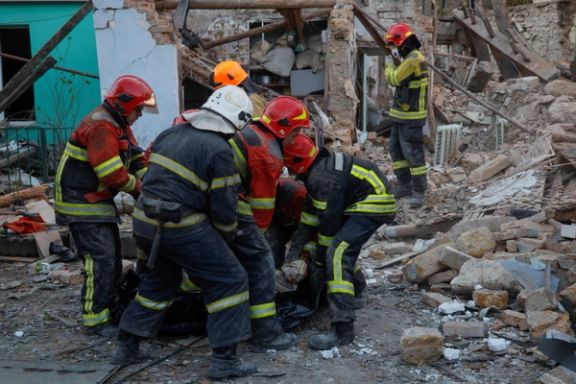
Tehran is preparing the dispatch of surface-to-surface missiles to Russia for use in Ukraine, CNN said Tuesday, citing “officials from a western country.”
CNN described the shipment as the “first instance of Iran sending advanced precision guided missiles to Russia.” It suggested the weapons “could give the Kremlin a substantial boost on the battlefield.”
A senior US defense official said Monday that Washington had no information of Iran preparing to send the missiles. The Washington Post had reported Monday that Tehran planned to send missiles as well as additional military drones.
Robert Malley, the US Iran envoy, on Monday repeated US insistence that Tehran had sent UAVs (unmanned aerial vehicles), saying “those drones have been used to target civilians and civilian infrastructure” in Ukraine while Iran “in the face of all of this evidence, keeps lying and denying that it’s happening.”
The Post suggested that a “relationship of convenience” between Russia and Iran could “redraw regional alliances for decades to come” and that Tehran’s alleged arms sales to Moscow marked “a seismic shift,” while “fears of a new world war have never been greater.”
The newspaper traced Iranian-Russian military cooperation back to fighting to save President Bashar al-Assad in Syria, when their coordinated intervention enabled Assad by 2016 to begin regaining territory from opposition forces, including both the Islamic State group (Daesh) and the US-backed mainly Sunni Free Syrian Army.

But the Post also noted Moscow’s vote December 2006 at the United Nations Security Council to impose sanctions on Iran over its nuclear program, and the two states’ current rivalry over selling oil to China. It attributed today’s closer Tehran-Moscow relationship to shared experience of US and European sanctions.
Intense use of UAVs
With Ukraine deploying drones supplied by the US and Turkey to defend against the Russian invasion, the use of UAVs has been more intense than in many recent conflicts, due in part to drones’ relatively low costs and ability to breach defense systems designed to stop missiles.
But Iran’s large scale export of missiles and drones is seen by the West as a dangerous turn of events because Tehran could use future opportunities to arm countries opposed to NATO or the United States
Russia Saturday suspended a UN-brokered arrangement allowing grain shipments through the black sea after a drone attack on at least one Russian warship near Sebastopol. Moscow said the strike had been planned with British involvement. The UN initiative facilitates the export of both grain and fertilizer, especially to Africa and the Middle East.
An additional $275-million US military package announced by the Pentagon Friday was smaller than earlier packages, with disquiet in the Republican Party shown in objections to plans to fund Ukraine with seized Russian assets.
The British defense ministry said Friday Moscow had adopted a “long-term, defensive posture,” while Vitali Klitschko, Kyiv mayor, said people would freeze to death if western counties did not supply blankets and generators. Associated Press reported Monday that Russia was hiring US-trained Afghan special forces to fight in Ukraine.
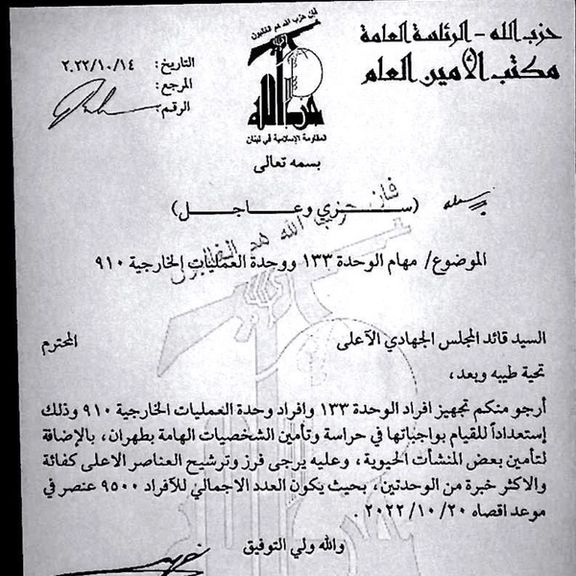
An unverified – and seemingly fake -- document has been leaked on social media, claiming that Iran-backed Hezbollah is sending forces to help the Islamic Republic crackdown on protesters.
The document, allegedly leaked from the office of Hezbollah’s chief Hassan Nasrallah two weeks ago – dated October 14 -- said that personnel from unit 133 and unit 910 (special foreign operations) are being prepared to be deployed to defend the Islamic regime. The total number of these forces is 9,500 people.
On top of the paper, it is written "secret and urgent," and the deadline for sending the troops according to the alleged leaked document was on October 20.
Another similar document, dated September 18, was allegedly leaked last month, saying 4,000 forces will be deployed to Iran.
The document has been described by social media users as an attempt by psychological operations unit of IRGC’s Intelligence Organization to deter Iranians from joining antigovernment protests. Some argue that if the document is not fake, it means the Islamic Republic is at such a low point that has asked Hezbollah for help, and in such a few thousand forces cannot help to quash the uprising in a large country like Iran with a population of more than 80 million.
According to a report by the Jerusalem Post in October, plainclothesmen with Lebanese-accented Arabic were seen trying to help Iranian security to suppress the protesters in various cities, including in the capital of Tehran, creating speculation that Hezbollah and Iraq’s Shiite militia Hashd al-Shaabi have been helping the Islamic Republic in its clampdown.

Satellite images have shown the United Arab Emirates has deployed the Israeli-made Barak 8 missile aerial defense batteries against ballistic and cruise missiles, and drones.
Images released by Tactical Report, a geopolitical intelligence company covering events in the Persian Gulf states and Middle East, indicated that the batteries and an Elta EL/M-2084 radar have been deployed near al-Dhafra airbase, south of Abu Dhabi.
The Barak missile defense system is jointly developed by India’s Defense Research and Development Organization (DRDO) in collaboration with Israeli Aircraft Industry's Elta division, Rafael and several other companies in both countries.
The batteries are the first phase of a substantial contract for additional systems to protect sensitive sites that have been targeted by missiles and drones launched by Iran-backed Houthi rebels over Abu Dhabi’s cooperation with the Saudi-led military campaign. The UAE has seen several missile and drone attacks carried out by the rebels in recent months.
Late in September, Israel said it had agreed to sell the advanced air defense system to the UAE in the first such deal since they forged relations in 2020.The UAE and Israel have been coordinating appeals to the US to formulate a new security strategy for the Middle East in case of a nuclear deal with Iran.
The UAE has bought billions of dollars of advanced weapons from the United States, with one deal alone under the Trump administration put at $23.5 billion. US annual military aid to Israel is over $3.5 billion.
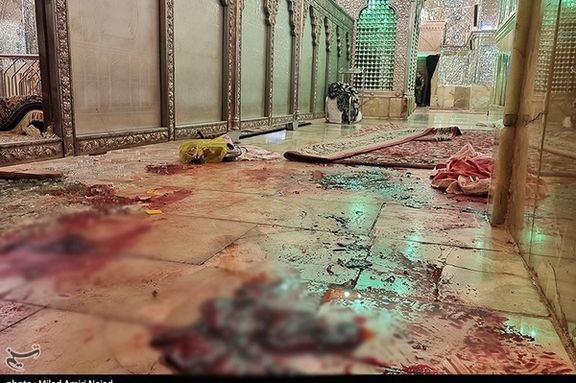
Iran's Revolutionary Guard (IRGC) says its intelligence wing (SAS) foiled a bomb attack Wednesday in Shiraz after a parallel deadly shooting at a shrine there.
"A bombing in Mo'ali Abad Street in Shiraz was detected and foiled by the Revolutionary Guards intelligence," Sepah news said, without giving further details.
There is no possibility to verify IRGC's claim, as the ideological-military-business organization and also Iran's Intelligence Ministry in the past have made numerous similar claims without presenting any evidence. In most cases no public trial of suspects were held or even names released.
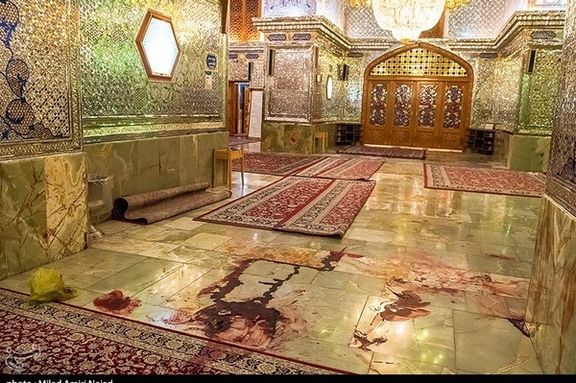
The IRGC-linked Fars News quoted “an informed security source in Shiraz” as saying that the remotely-controlled bomb was found and neutralized by security forces and intelligence ministry agents after the gun attack on Shahcheragh shrine.
Wednesday's shooting, which was claimed by the Islamic State (ISIS) group, killed 15 including children and injured dozens more at the Shahcheragh shrine. Officials said they had arrested a gunman who carried out the attack at the shrine. The attack took place amid widespread antigovernment protests across the country which began nearly two months ago following the death in police custody of Mahsa Amini, a 22-year-old Kurdish woman, on September 16.
The Iranian government has organized nationwide demonstrations against the shooting following Friday prayers. Funerals were also due to take place for the victims. Officials said they had arrested a gunman who carried out the attack at the shrine.
Supreme Leader Ali Khamenei vowed on Thursday to retaliate against those threatening the country's security without further elaboration as to whether this meant those responsible for the attack, protesters, or both.
"We will take revenge for the blood of the martyrs of Shiraz," said Tehran Friday prayer Imam Haj Ali Akbari about the attack on the shrine.
Many Iranians did not trust the authorities or believe that ISIS was responsible for the attack. They accuse the regime of being behind the attack or orchestrating it to blame protesters at home for causing unrest and insecurity and justify harsher crackdown against opponents.

Iran’s alleged supply of drones to Moscow remains high on the agenda at the United Nations and in Israeli President Isaac Herzog’s visit to the United States.
Miguel de Serpa Soares, head of UN legal affairs, told the UN Security Council Wednesday that Secretary-General Antonio Guterres would “continue to prepare” reports on UNSC Resolution 2231.
France, the United Kingdom and the United States last week submitted a letter at the UN arguing any supply of drones by Iran to Russia would violate the resolution, which endorsed the 2015 Iran nuclear agreement. Russia’s UN ambassador Vassily Nebenzia said Wednesday the letter broke the UN Charter by seeking to influence the general secretary.
Antonio Guterres has reported twice a year, in June and December, on the implementation of Resolution 2231, including inspections of military parts found in Saudi Arabia and Yemen. Ukraine, France, the UK and US argue that the resolution contains a provision banning Iran from exporting without prior UN approval certain military goods, including drones.
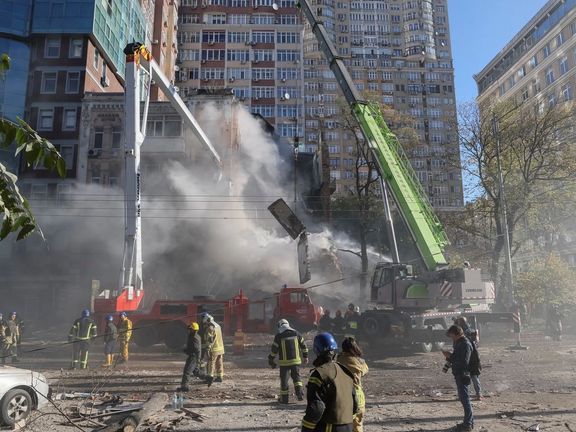
‘National security interests’
The alleged drone supply has also been highlighted this week in the US by Herzog, with Israel’s relations with Russia under the spotlight as Israel’s November 1 elections approach. Herzog pushed back Tuesday against Ukrainian demands from Ukraine for defense assistance, telling an event at the Atlantic Council “there are things we cannot supply due to national security interests.”
But while the Israeli government refuses to give military aid to Ukraine for fear of upsetting its relationship with Russia, the issue has lingered in Israeli politics since Diaspora Minister Nachman Shai tweeted October 16 in favor of sending support as there was “no longer any doubt where Israel should be in this bloody conflict.”
The Jerusalem Post Thursday hit back at Ukrainian President Volodymyr Zelenskyy over his latest broadside, pointing out in an editorial that Iran “developed drones because it can’t build advanced warplanes…[had] exported drones all around the Middle East and targeted Israel for years, and that Ukraine… [had] not backed Israel in the past…” The Post added that rockets used by Hamas and Hezbollah “sometimes…have origins in Russian technology.”
The newspaper argued it took years to deploy and integrate air defense systems and that “it’s not clear even” that Israeli defenses were “appropriate for Kyiv.” Zelenskyy had told Haaretz newspaper that an Iran-Russia “alliance…would not have happened if your politicians had made one decision at a time.” The Ukrainian leader said appeals to Israel went back to 2014, when Russia annexed Crimea.
‘Co-existence and weakening extremists’
Opposition leader Benjamin Netanyahu – who in 2019 adorned his Likud Party HQ with a huge picture of himself and Putin – told USA Today in an interview published October 21 that he hoped the Russian president would rethink “his vision of reconstituting a great Russian kingdom.”
Herzog’s meeting with President Joe Biden saw the US leader call for a ‘two-state solution’ in Israel-Palestine and welcome the maritime agreement due to be signed Thursday between Israel and Lebanon. The Times of Israel reported that US officials had raised concern over escalating violence in the West Bank, which has so far barely surfaced as an issue in the Israeli election.
A White House statement said the two leaders had “discussed the importance of promoting co-existence and weakening extremists who promote hatred and violence.” This year’s growing death toll in the West Bank has reportedly increased support there for Islamic Jihad, which has close links to Tehran.
Biden called the agreement with Lebanon “a historic breakthrough” that took “some real guts…and persistent diplomacy.” Hassan Nasrallah, leader of Tehran-allied Hezbollah, said in early October his party would respect the agreement, which could allow both countries to benefit from offshore gas deposits but which does not cover the land border.